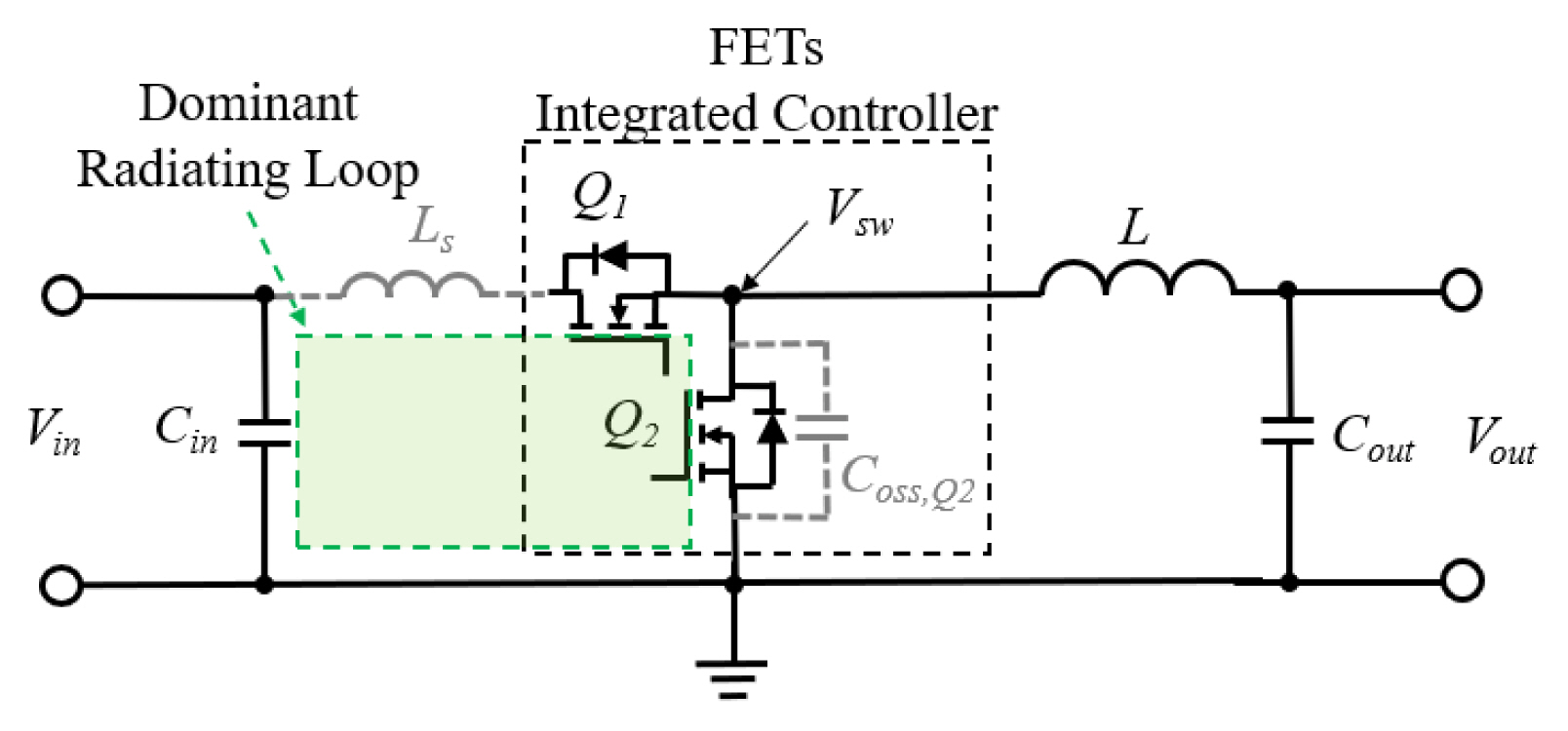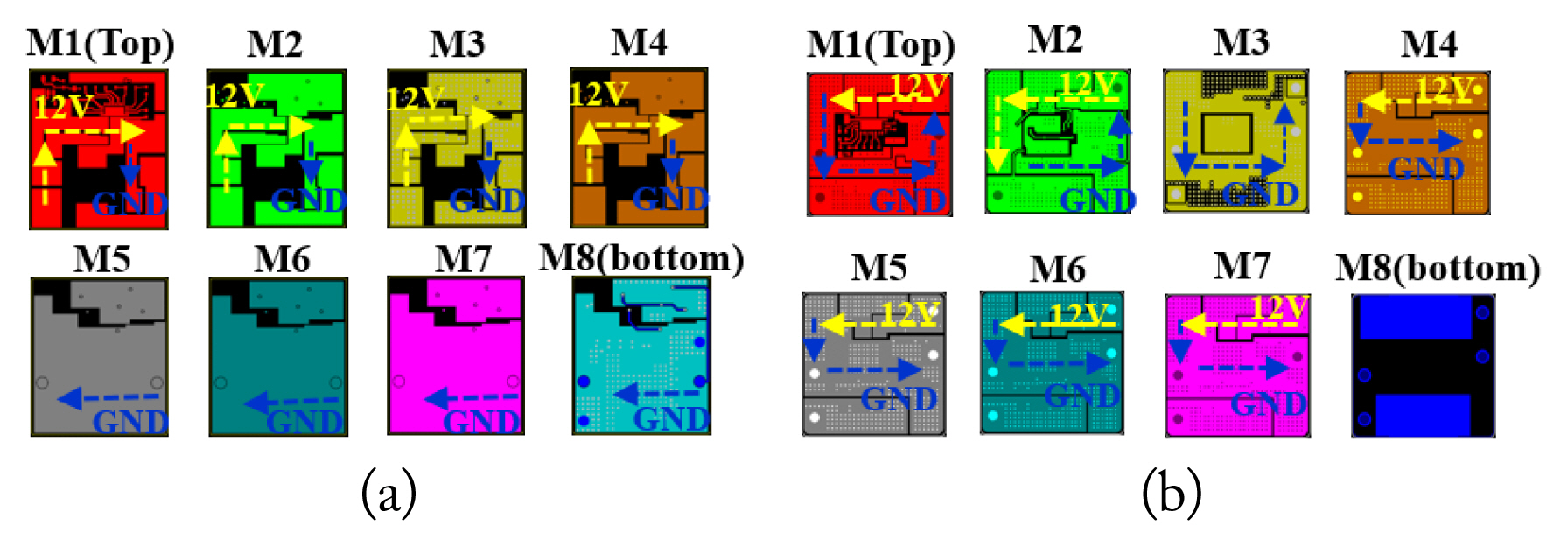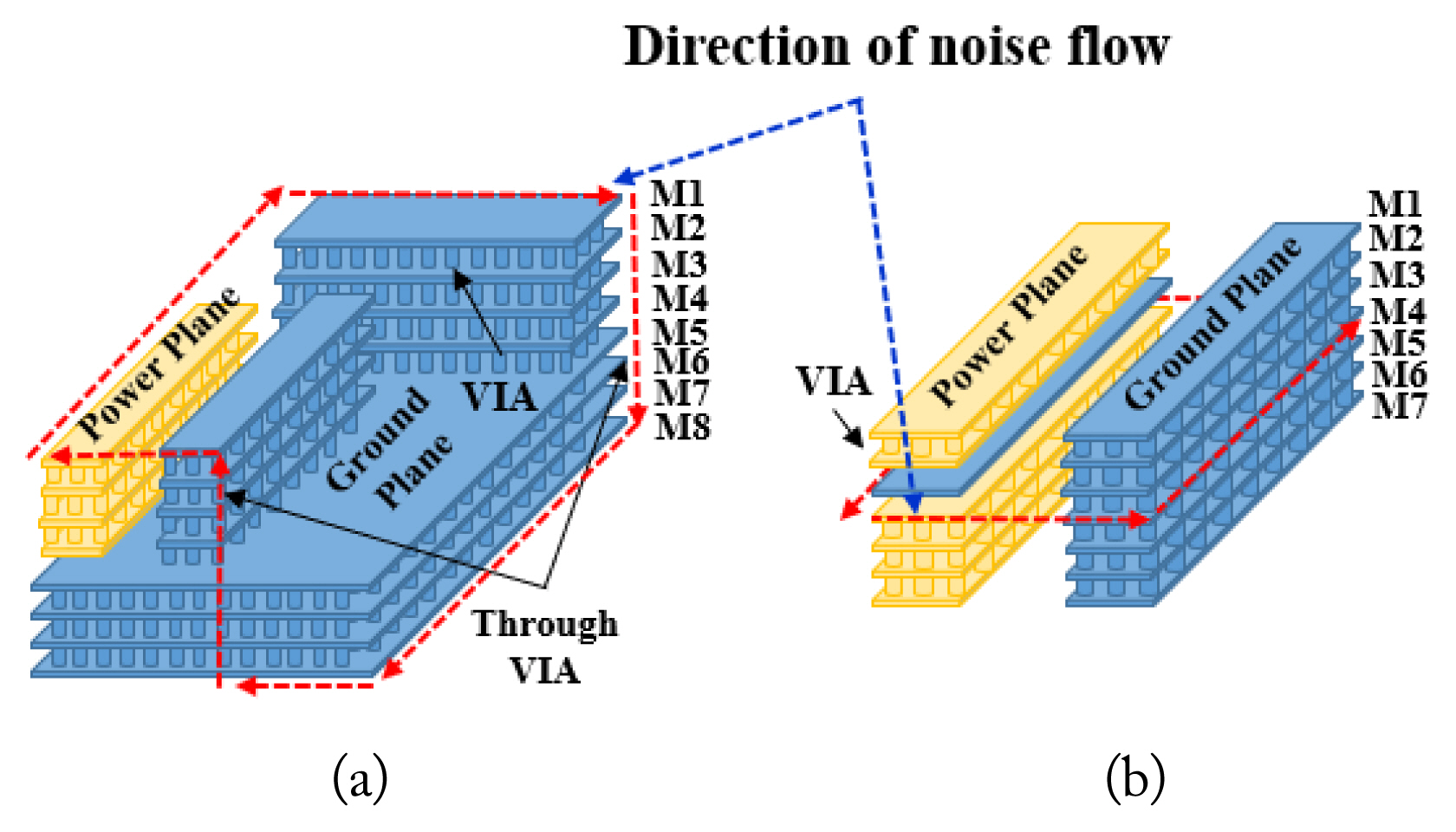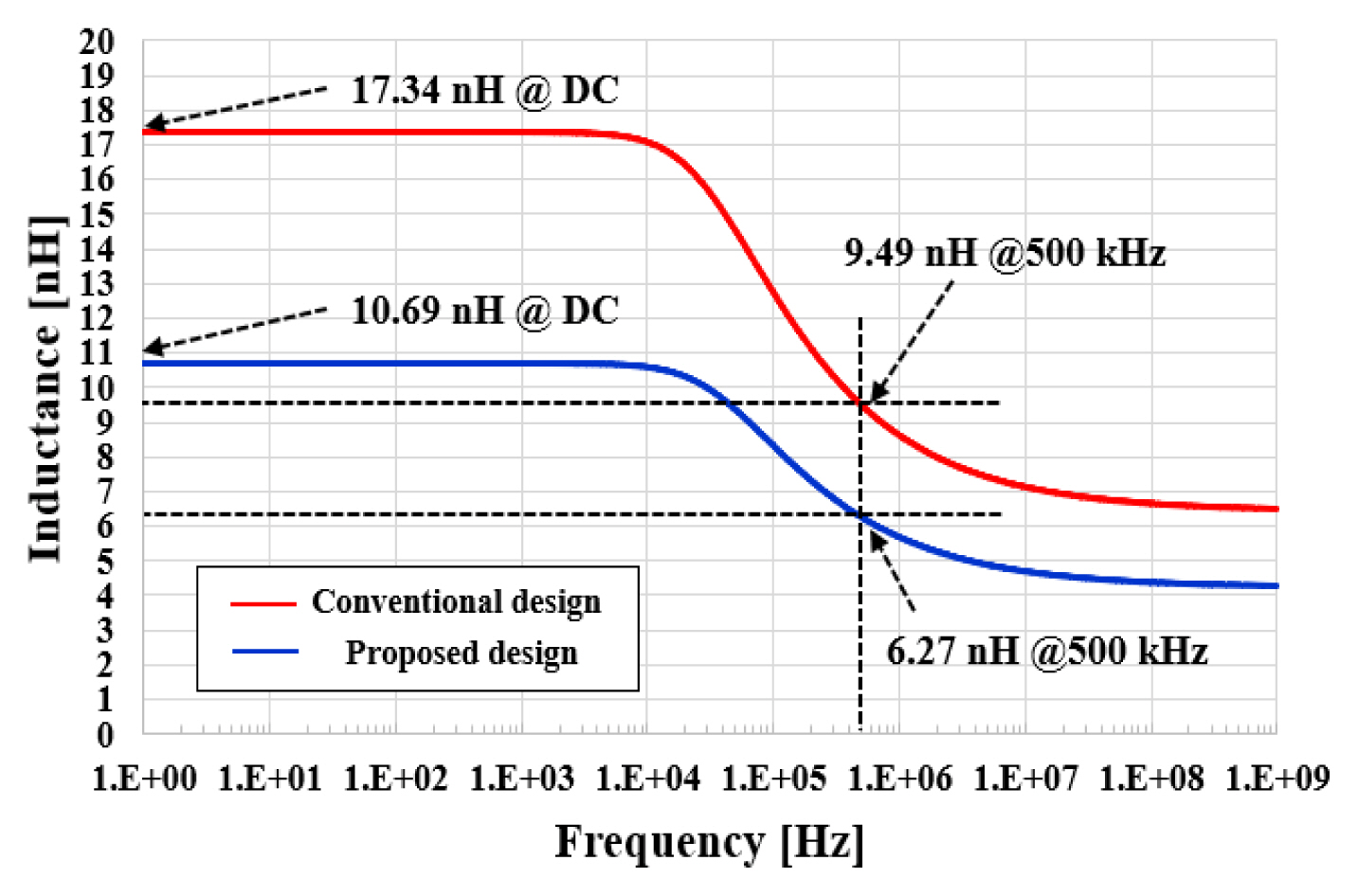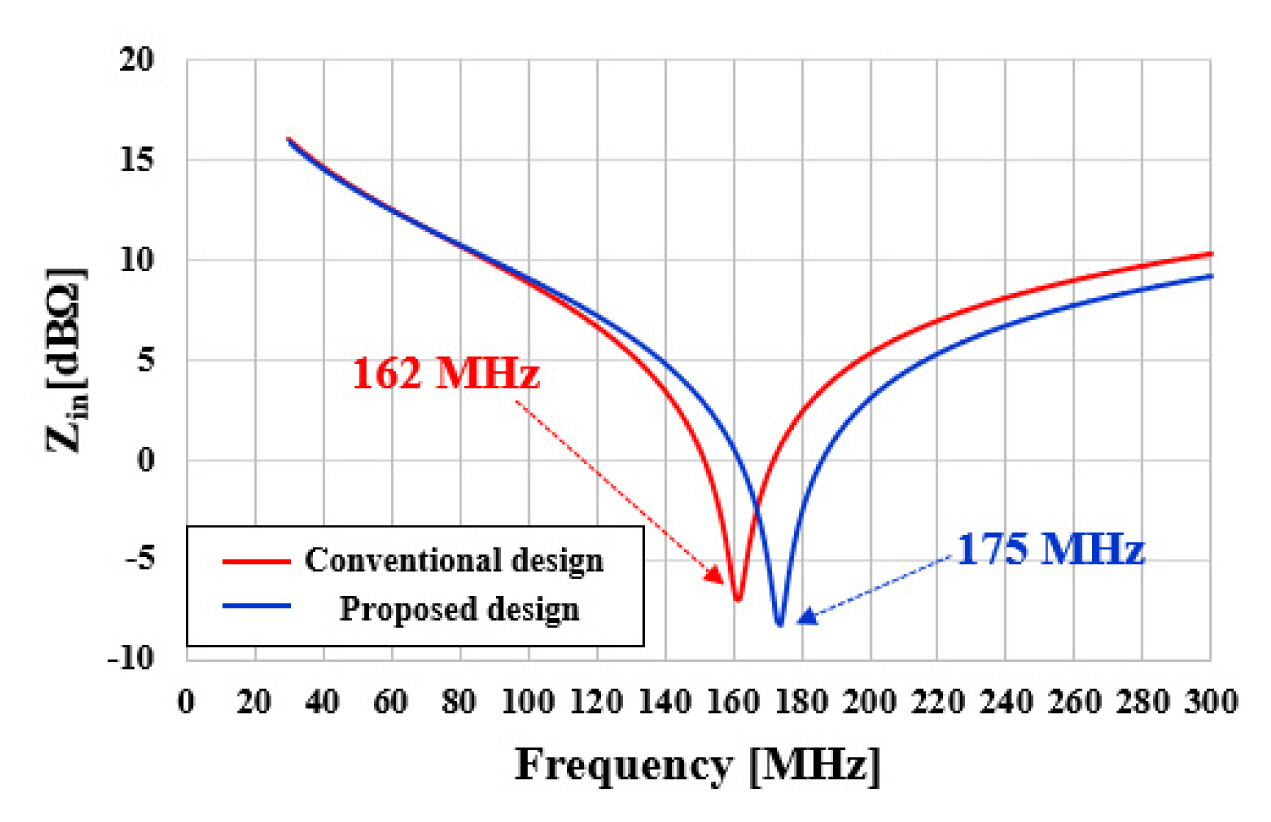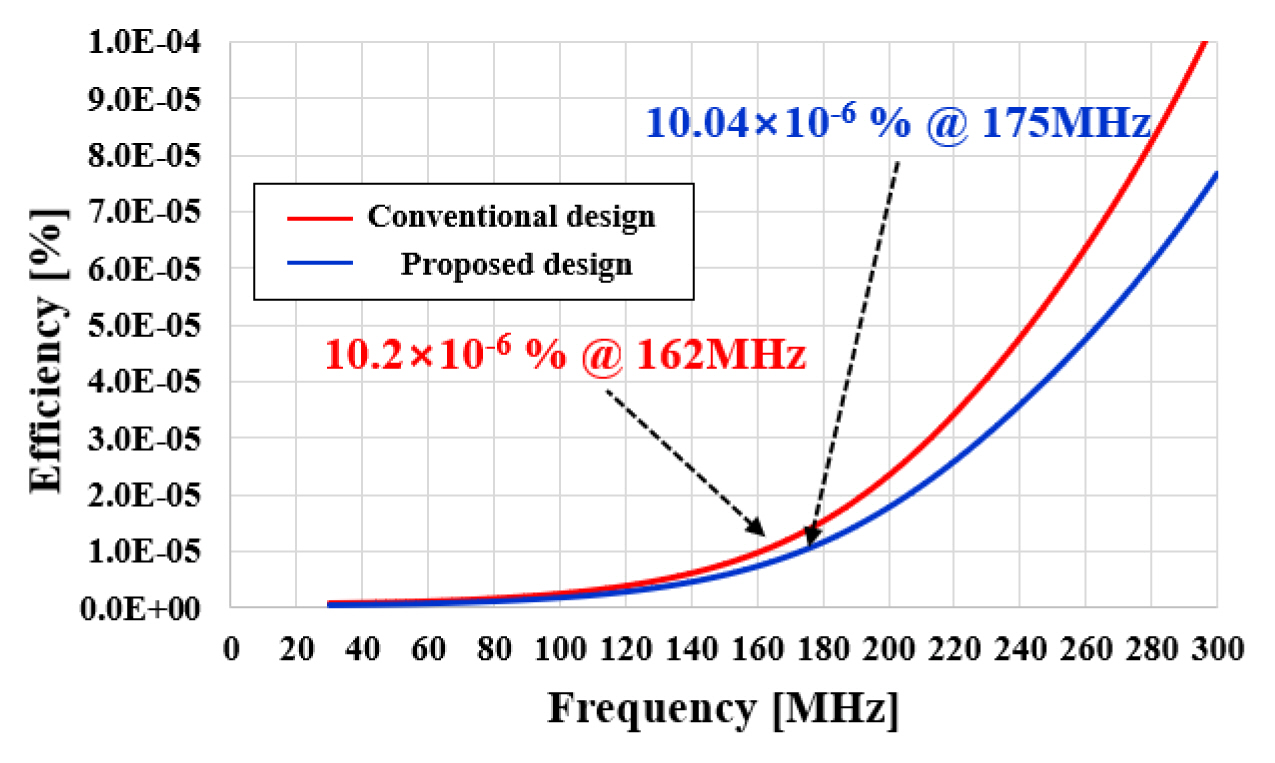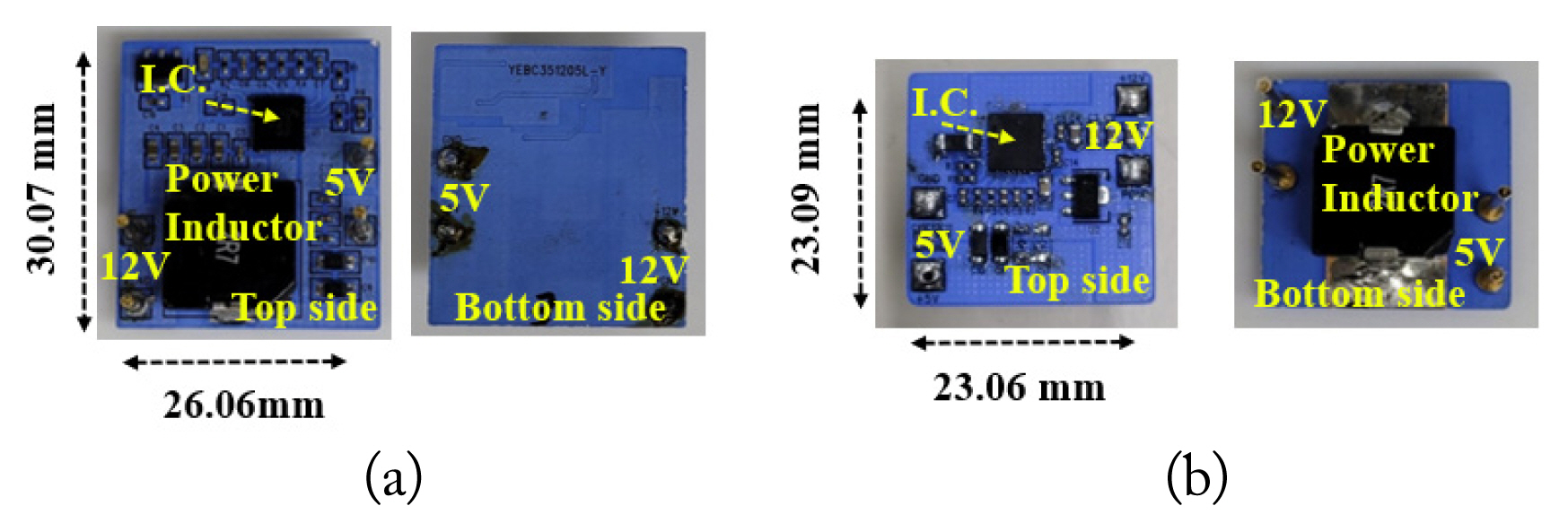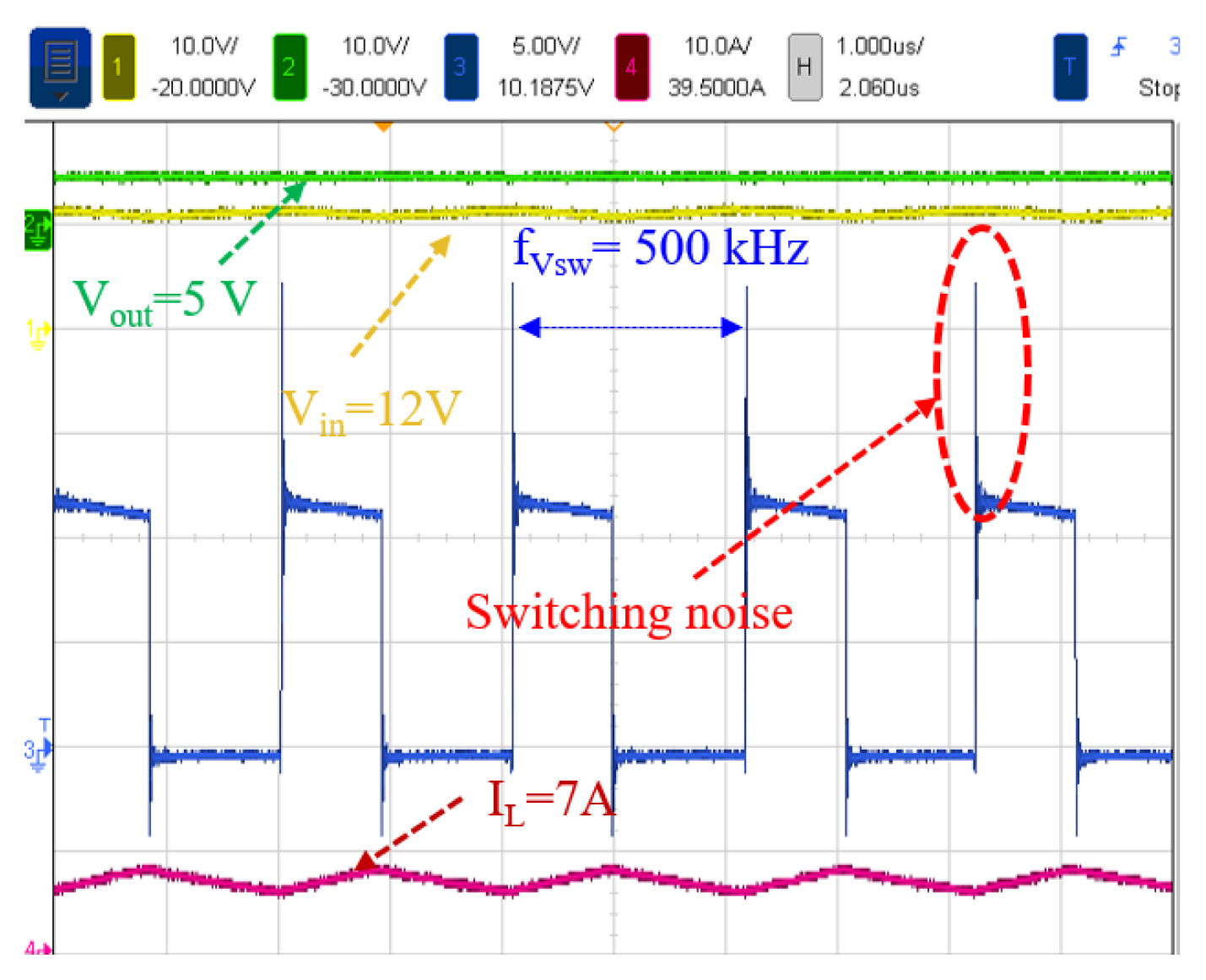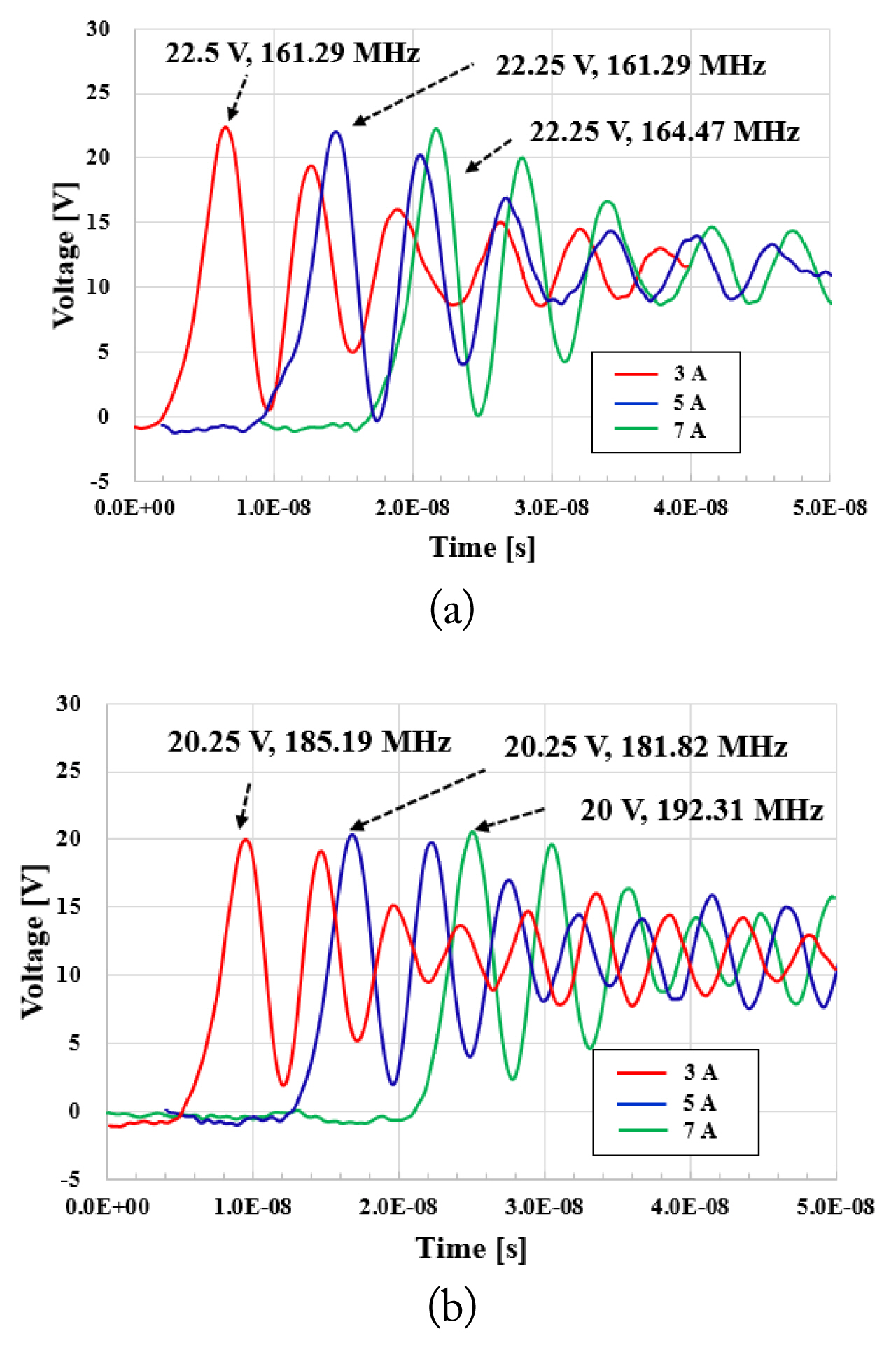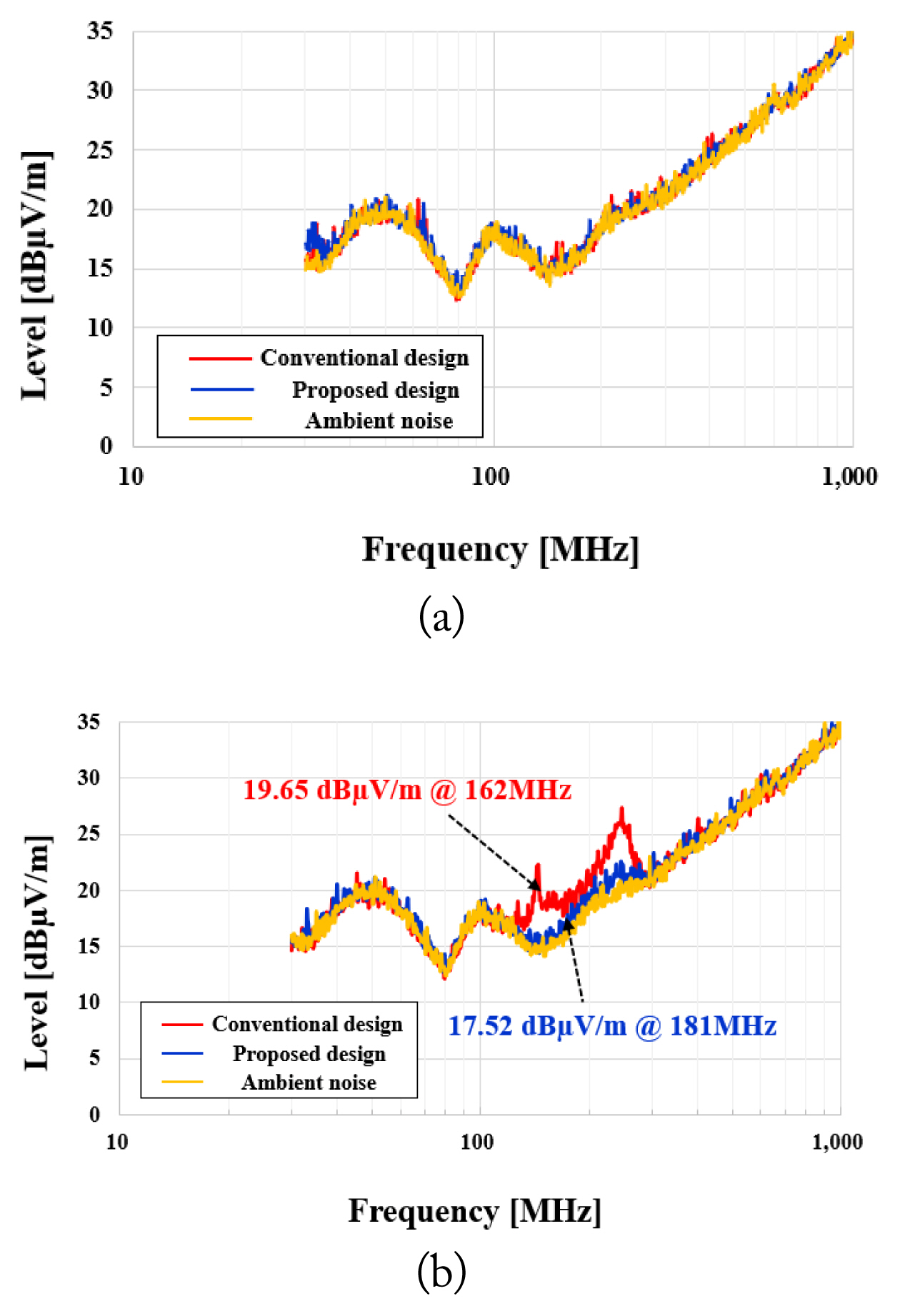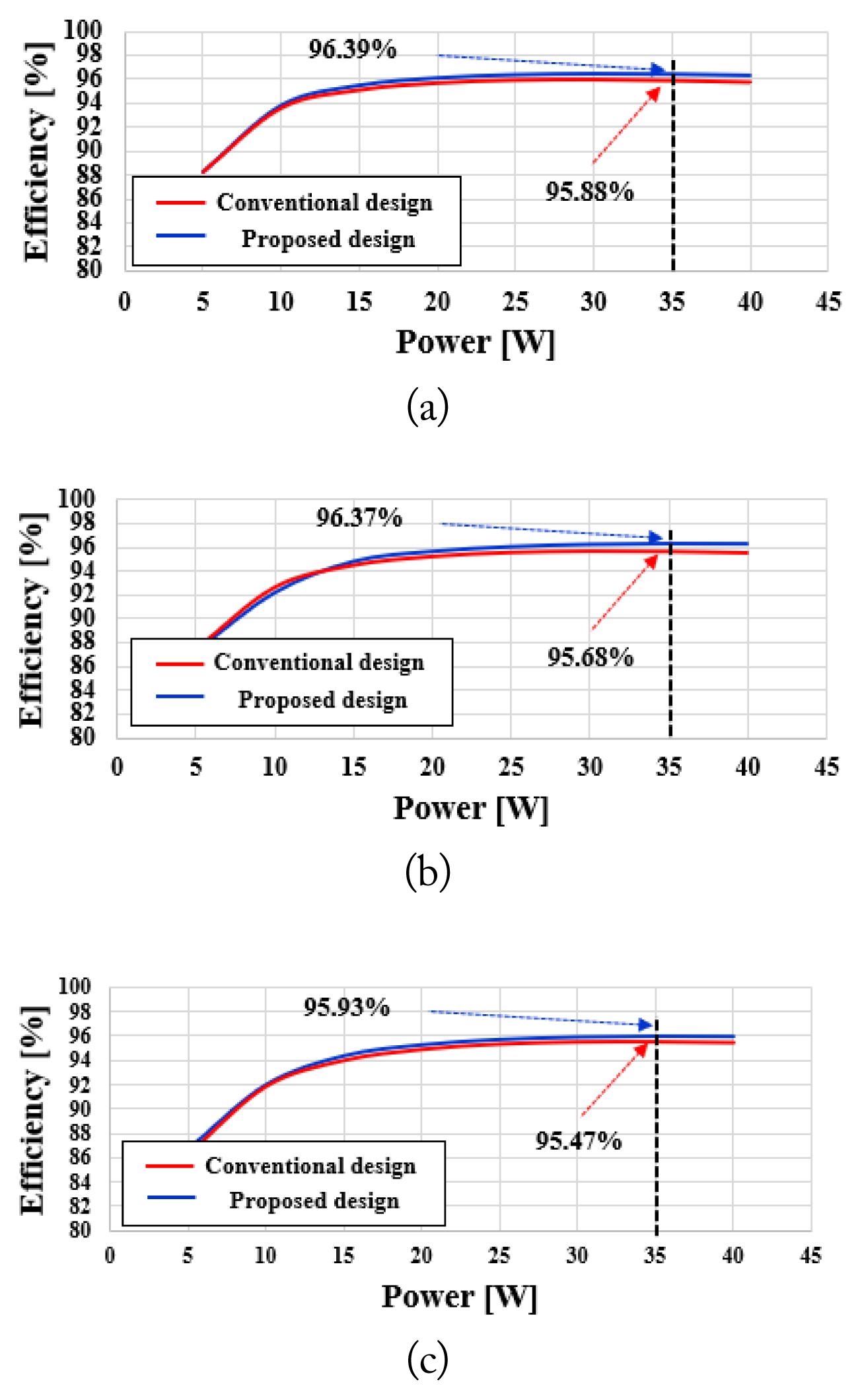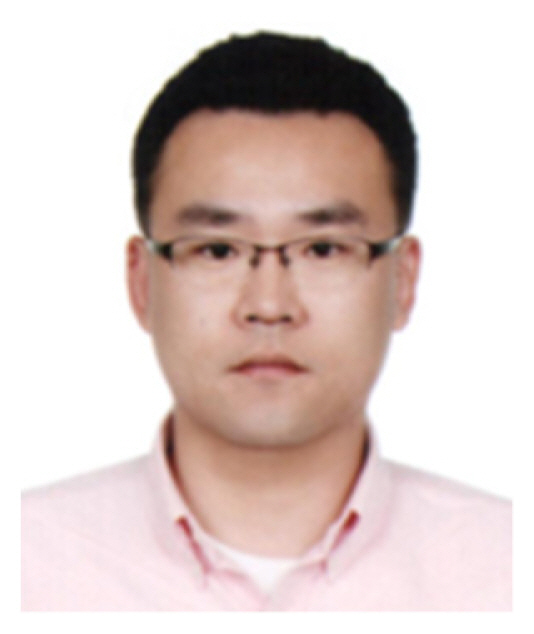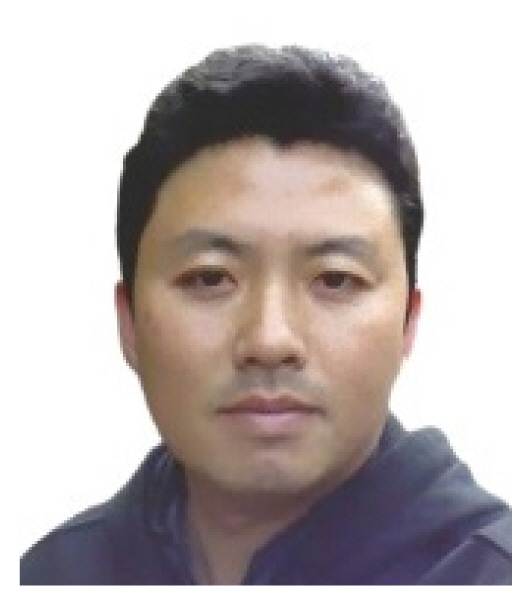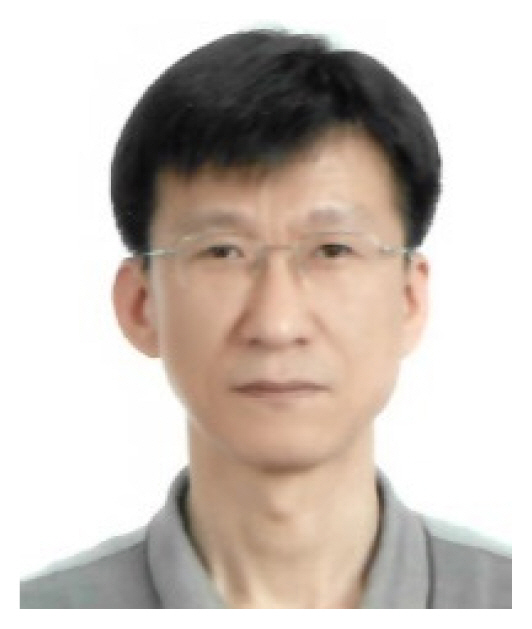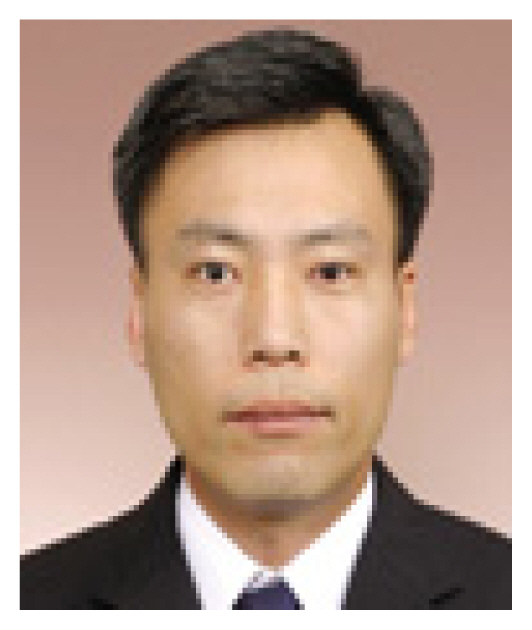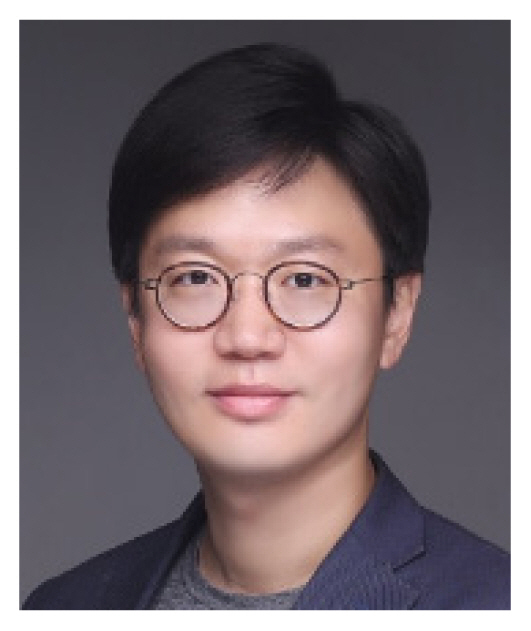I. Introduction
With the advent of portable devices, such as tablets, smartphones, and laptops, lightweight electronic devices with a small volume are in high demand [1ŌĆō3]. Additionally, the demand for flat and thin electronic devices such as laptops and televisions has been growing [4ŌĆō6]. To small-volume, light-weight, and flat electronic devices, researchers have focused on developing a suitable power-conversion system [7ŌĆō9]. Wide bandgap (WBG) semiconductors, such as gallium nitride (GaN) and silicon carbide (SiC), can be used in such power conversion systems. WBG-semiconductor-based power devices can operate at high frequencies. Moreover, owing to their fast-switching frequency, passive components can be designed to be compact and lightweight. Therefore, lightweight and small power conversion systems are possible [10ŌĆō13]. However, as the switching frequency of a power conversion system increases, issues related to electromagnetic interference (EMI) can emerge. Therefore, various studies have been conducted to reduce EMI by curbing stray inductances in power conversion systems [14ŌĆō16].
Low-temperature co-fired ceramic (LTCC) is generally used in wireless applications owing to its excellent performance at high frequencies [17ŌĆō19]. Compared to the cheap flame retardant 4 (FR-4) substrate, LTCC offers superior thermal conductivity and heat dissipation. The thermal conductivities of FR-4 and LTCC are 0.2ŌĆō0.4 and 4ŌĆō5 W/m┬ĘK, respectively [20]. In addition, LTCC has a high wiring density with vias that are filled with silver paste, and it benefits from multilayer circuits that reduce stray inductance [21].
With this background, in this study, an LTCC-based direct current (DC)-DC converter is proposed to reduce stray inductance and radiated emissions for achieving electromagnetic compatibility (EMC). Two types of LTCC-based DC-DC converters are designed and built for comparison: one is based on a conventional design, wherein the ground and power planes are in separate layers. In the other design, the ground and power planes exist in each layer, which is observed to be effective for reducing the stray inductance of the dominant radiating loop, which reduces the peak voltage of switching noise and the radiated emission level.
The remainder of this paper is organized as follows: in Section II, the designs of the circuit and LTCC boards of the DC-DC converter are introduced, along with the simulated characteristics of the LTCC board. Section III presents the measured power-conversion and radiated-emission characteristics of the DC-DC converters compared herein. The suitability of LTCC as a substrate for DC-DC converters to achieve EMC and efficient power conversion is demonstrated. In Section IV, we introduce the proposed DC-DC converter based on LTCC technology and discuss the superiority of LTCC as a substrate. Finally, in Section V, we present the conclusions of this study.
II. Design of DC-DC Converter and LTCC Substrate
Fig. 1 shows the designed buck converter circuit as one of the DC-DC converters. Herein, the buck converter was designed with an input voltage (Vin) of 12 V, output voltage (Vout) of 5 V, output power of 35 W, and switching frequency of 500 kHz. The converter comprises an input capacitor (Cin), an output capacitor (Cout), a power inductor (L), and a field-effect transistor (FET)-based integrated controller. Owing to alternate switching of the two FETs (Q1, Q2), noise can be generated at the voltage of switching node (Vsw) of the buck converter. Typically, noise is generated at the switching node through two mechanisms: body-diode reverse recovery and FET switching [22ŌĆō24]. The reverse-recovery noise of the buck converters is determined by the characteristics of the body diode in the FETs, whereas the switching noise is generated by the stray inductance (Ls) of the dominant radiating loop and the output capacitance of Q2 (Coss,Q2). The frequency of switching-noise (fnoise) and the peak voltage of switching noise (Vsw,peak) are defined as follows [25, 26]:
where
d i d t
For comparison, Fig. 2 depicts each layer of the designed substrates for the buck converter. The substrates were composed of eight metal layers M1ŌĆōM8. The yellow and blue arrows indicate the directions of the noise currents flowing to the power and ground planes, respectively.
Fig. 3 shows the noise currents flowing through the dominant radiating loops of the designed substrates when all layers are stacked. The metals constituting each layer were electrically connected through vias based on the plane classification. As illustrated in Fig. 3(a), in the conventional design, the ground and power planes were separated vertically whereby the generated noise flowed vertically through the via that connected each of the layers. Moreover, the proposed substrate was designed to reduce the stray inductance of the dominant radiating loop by placing the ground and power planes parallel to each other in each layer, except in layers M3 and M8, to ensure electrical connection of other components, as illustrated in Fig. 3(b).
Fig. 4 shows the simulated frequency-dependent stray inductance of the dominant radiating loop. We used the Ansys Q3D tool to simulate the stray inductance. The stray inductances of the conventional and proposed designs were 17.34 and 10.69 nH at DC, respectively. In addition, the stray inductances of the conventional and proposed designs were 9.49 and 6.27 nH, respectively, at 500 kHz, which was the switching frequency of the designed buck converter. The simulation results confirmed that the stray inductance of the proposed design was lower than that of the conventional design.
Because the generated noise can be radiated owing to the antenna efficiency of the substrate [27], the antenna characteristics of the dominant radiating loop were simulated at various frequencies. We used Ansys HFSS simulation software to simulate the radiation properties. In a previous analysis of the switching noise of the buck converter, the output capacitance of the FET used in the integrated circuit, calculated using Eq. (1), was approximately 100 pF. Therefore, a 100 pF capacitance was selected for simulating the radiation properties. Fig. 5 depicts the frequency-dependent input impedances (Zin) of the dominant radiating loops of the conventional and proposed buck converter designs. The simulated resonant frequencies of the conventional and proposed buck converter designs were 162 and 175 MHz, respectively [25].
Fig. 6 illustrates the frequency-dependent radiation efficiencies of the dominant radiating loops of the conventional and proposed buck converters. The simulated radiation efficiencies of the conventional and proposed buck converters were 10.2 ├Ś 10ŌłÆ6% at 162 MHz and 10.04 ├Ś 10ŌłÆ6% at 175 MHz, respectively. The radiation efficiencies of the proposed and conventional buck converters were similar at the resonant frequency. However, the simulation results confirmed that the frequency-dependent radiation efficiency of the proposed buck converter was lower than that of the conventional buck converter.
III. Measured Results
Fig. 7 shows the built buck converters. The width and length of the conventional buck converter were 26.06 and 30.07 mm, respectively, whereas those of the proposed buck converter were 23.06 mm and 23.09 mm. Fig. 8 shows the operating characteristics of the conventional buck converter for the output power of 35 W. The buck converter operated as designed. In addition, switching noise was generated at Vsw. The conventional and proposed buck converters were compared to verify the switching noise characteristics.
The resonant frequency and peak voltage of switching noise of the built converters were measured, as illustrated in Fig. 9. The peak voltages corresponding to the switching noise of the conventional and proposed buck converters were 22.5 and 20.25 V at the output current of 3 A, 22.25 and 20.25 V at the output current of 5 A, and 22.25 and 20 V at the output current of 7 A, respectively. In addition, the switching noise frequencies of the conventional and proposed buck converters were 161.29 and 185.19 MHz at the output current of 3 A, 161.29 and 181.82 MHz at the output current of 5 A, and 164.47 and 192.31 MHz at the output current of 7 A, respectively. These results confirmed that the stray inductance of the proposed buck converter was lower than that of the conventional buck converter.
The measured operating characteristics of the two buck converters are summarized in Table 1. The proposed design had a lower peak voltage of switching noise (Vsw,peak) than that of the conventional design owing to its lower stray inductance. The output capacitance (Coss,Q2) was calculated using Eq. (1) and the measured switching noise frequency and simulated stray inductance. The calculated output capacitance value was approximately 100 pF. Furthermore, the resonant frequencies of the conventional and proposed buck converters were similar to the corresponding simulated values.
Fig. 10 depicts the measured radiated emission levels of the buck converters. To minimize the effect of the noise generated by electronic devices, such as the electrical load and power supply, a 12 V battery and a discrete resistor were used. Considering the difficulty of configuring the resistance at the output current of 3 A or 7 A, the accumulated peak radiated emission levels of the buck converters were determined at the output current of 5 A. The radiated emission levels of the buck converters were measured in accordance with the CISPR 16-1-1 and IEC 61000-6-3 standards. The distance between the turntable on which the buck converter was loaded and the receiver antenna was 10 m. In addition, the radiated emission level of the buck converter was determined by moving the receiver antenna over distances of 1ŌĆō4 m in the horizontal and vertical directions [28]. When the antenna was moved in the vertical direction, noise from the buck converter could not be detected because of the ambient noise level, as illustrated in Fig. 10(a).
However, when the antenna was moved in the horizontal direction, the noise emitted by the buck converters was detected, as illustrated in Fig. 10(b). The radiated emission level of the proposed buck converter (17.52 dB╬╝V/m at 181 MHz) was lower than that of the conventional buck converter (19.65 dB╬╝V/m at 162 MHz) by approximately 2 dB╬╝V/m lower at the resonant frequency. Although the radiation efficiencies of both buck converters were similar at the resonant frequency, the radiated emission level of the proposed buck converter was lower than that of the conventional buck converter at the resonant frequency. This was because the generated noise level was lower owing to lower stray inductance in the proposed design.
Fig. 11 depicts the power conversion efficiencies, which represent a major characteristic of power conversion systems, of the built buck converters. The measured power conversion efficiencies of the conventional and proposed buck converters were 95.88% and 96.39% at the input voltage of 10.8 V, 95.68% and 96.37% at the input voltage of 12 V, and 95.47% and 96.93% at the input voltage of 13.2 V, respectively; the output power was 35 W in all cases.
IV. Discussion
Table 2 shows a performance comparison of the LTCC-based DC-DC converters built herein. In the pursuit of a small volume, a low-profile LTCC inductor has been reported as a substrate in the literature [29, 30]. This low-profile LTCC inductor can be designed to have a high switching frequency. However, as the switching frequency increases, the efficiencies of the DC-DC converter with the low-profile LTCC inductor decrease to less than 90%. In addition, to achieve high power conversion efficiency, a DC-DC converter with an LTCC substrate was reported. Owing to the low power consumption, high wiring density, and high thermal conductivity of LTCC, high-power conversion efficiencies exceeding 90% were achieved with this DC-DC converter [20, 21]. As reported in [21], the required radiated emission level characteristics were realized.
The LTCC-based DC-DC converter design proposed herein reduced the switching noise and radiated emission level without adversely affecting the power conversion efficiency. To further reduce noise, snubber or gate circuits, which consist of passive components, could be used. Although these solutions may reduce the noise, the power loss due to their passive components can degrade the power conversion efficiency. Note that the efficiency of the proposed LTCC-based DC-DC converter does not decrease, unlike those of the conventional designs.
V. Conclusion
In this study, we presented an LTCC-based DC-DC buck converter that reduced the switching noise and radiated emission level, thereby facilitating the realization of EMC. By utilizing a multilayer design based on LTCC technology, the switching noise and radiated emission level of the DC-DC converter were reduced. Notably, the power conversion efficiency, which is one of the significant characteristics of power conversion systems, was retained unchanged. Therefore, the LTCC substrate is expected to be used in power conversion systems with high switching speed, high efficiency, and low EMI.




